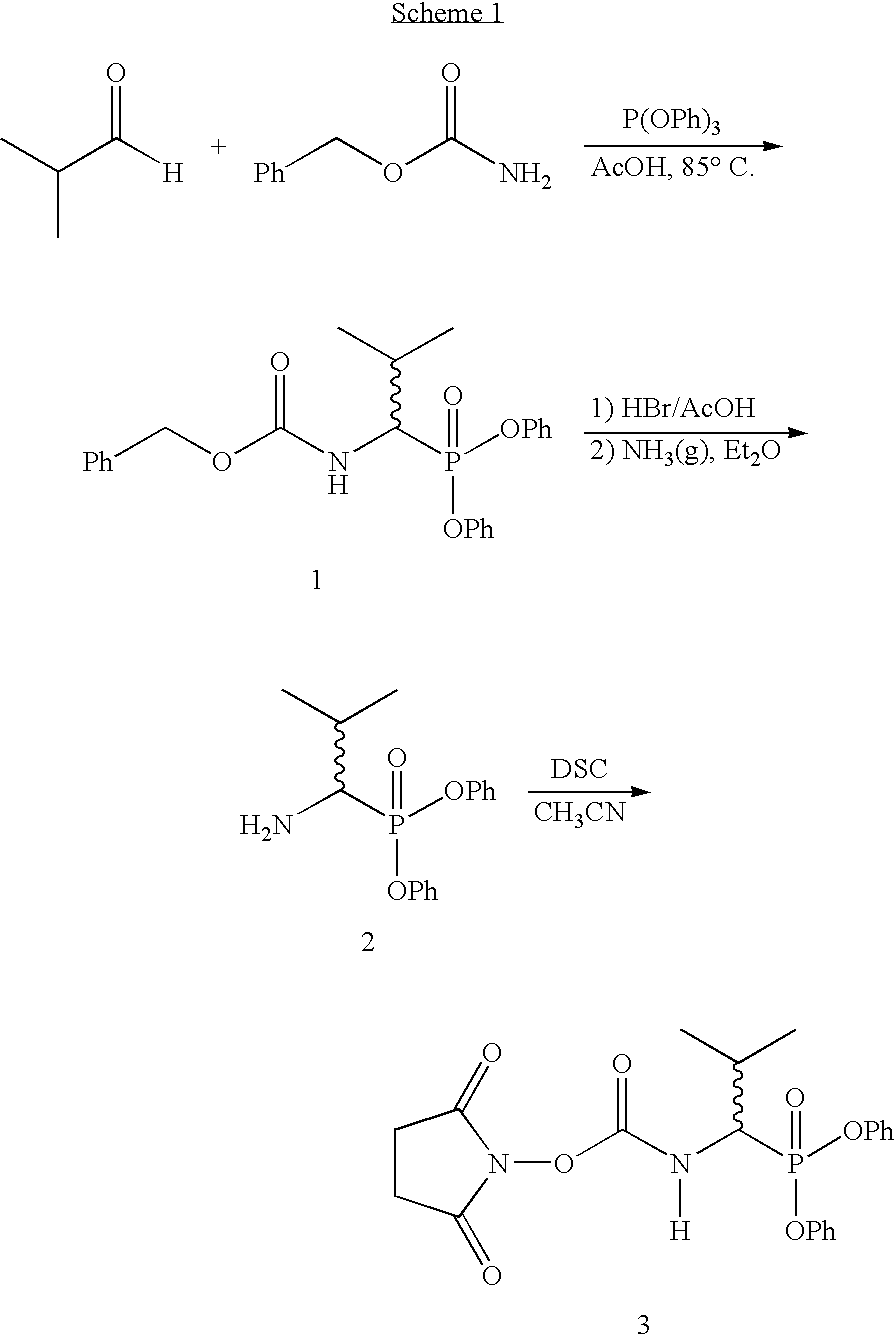Systematic evolution of ligands by exponential enrichment: Chemi-SELEX
a technology of exponential enrichment and ligands, applied in the field of systematic evolution of ligands by exponential enrichment, can solve the problems of few successes and perform over a somewhat narrow range of chemical possibilities, and achieve the effect of less laborious
- Summary
- Abstract
- Description
- Claims
- Application Information
AI Technical Summary
Benefits of technology
Problems solved by technology
Method used
Image
Examples
example 1
5′-phosphorothioate-modified RNA binding to N-bromoacetyl-bradykinin
[0063] This example describes a Chemi-SELEX procedure wherein RNA is modified with a 5′ guanosine monophosphorothioate (GMPS) functional unit and the target for which a ligand is obtained is N-bromoacetylated-bradykinin (BrBK). This example describes the selection and analysis of a 5′ guanosine monophosphorothioate-substituted RNA (GMPS-RNA) which specifically recognizes N-bromoacetylated-bradykinin (BrBK) and accelerates the formation of a thioether bond between the RNA and the BrBK peptide. Previous work in this area showed that it was difficult to obtain ligands to bradykinin both in free solution and conjugated to a support matrix. As will be described below, RNA showing a 6700-fold increase in kcat / Km and a 100-fold increase in binding affinity for N-bromoacetyl-bradykinin relative to the starting pool was identified. This RNA binds its substrate with high specificity, requiring both the amino- and carboxy-ter...
example 2
Splint SELEX to Identify Elastase Inhibitors
[0078] Highly potent and specific inhibitors of human neutrophil elastase were produced by an approach that incorporates the technologies of medicinal and combinatorial chemistry. A small-molecule covalent inhibitor of elastase (the valyl phosphonate functional unit) was coupled to a randomized pool of RNA, and this assembly was iteratively selected for sequences that promote a covalent reaction with the elastase target active site. The winning sequences increase both the binding affinity and reactivity over that of the small molecule functional unit alone; the overall increase in the second-order rate of inactivation was ˜104-fold. The rate of cross-reaction with another serine protease, cathepsin G, was reduced>100-fold. These compounds inhibit elastase expressed from induced human neutrophils, and prevent injury in an isolated rat lung model of ARDS. This strategy is generally useful for increasing the potency and specificity of small...
example 3
Nucleic Acid Ligands That Bind to HIV-1 Rev Protein
[0105] A target protein chosen to illustrate photo-SELEX process described in copending PCT / US94 / 10562 (WO 95 / 08003), filed Sep. 16, 1994, which is herein incorporated by reference was theRev protein from HIV-1. The example provided herein describes that ligands were identified which bound covalently to the Rev protein both with and without irradiation.
[0106] Rev's activity in vivo is derived from its association with the Rev-responsive element (RRE), a highly structured region in the HIV-1 viral RNA. Previous RNA SELEX experiments of Rev have allowed the isolation of very high affinity RNA ligands. The highest affinity ligand, known as “Rev 6a,” (SEQ ID NO: 103) has a Kd of approximately 1 nM. The sequence of Rev 6a is
(SEQ ID NO: 103)GGGUGCAUUGAGAAACACGUUUGUGGACUCUGUAUCU.
The secondary structure of 6a, and its interaction with Rev, have been well characterized.
[0107] The construction of the nucleic acid test mixture for photo...
PUM
| Property | Measurement | Unit |
|---|---|---|
| pH | aaaaa | aaaaa |
| pH | aaaaa | aaaaa |
| pH | aaaaa | aaaaa |
Abstract
Description
Claims
Application Information
 Login to View More
Login to View More - R&D
- Intellectual Property
- Life Sciences
- Materials
- Tech Scout
- Unparalleled Data Quality
- Higher Quality Content
- 60% Fewer Hallucinations
Browse by: Latest US Patents, China's latest patents, Technical Efficacy Thesaurus, Application Domain, Technology Topic, Popular Technical Reports.
© 2025 PatSnap. All rights reserved.Legal|Privacy policy|Modern Slavery Act Transparency Statement|Sitemap|About US| Contact US: help@patsnap.com


